We are justified, accordingly, in distinguishing between a myth and a legend. Though the words are etymologically parallel, and though in ordinary discourse we may use them interchangeably, yet when strict accuracy is required, it is well to keep them separate. And it is perhaps needless, save for the sake of completeness, to say that both are to be distinguished from stories which have been designedly fabricated. The distinction may occasionally be subtle, but is usually broad enough. Thus, the story that Philip II. murdered his wife Elizabeth, is a misrepresentation; but the story that the same Elizabeth was culpably enamoured of her step-son Don Carlos, is a legend. The story that Queen Eleanor saved the life of her husband, Edward I., by sucking a wound made in his arm by a poisoned arrow, is a legend; but the story that Hercules killed a great robber, Cacus, who had stolen his cattle, conceals a physical meaning, and is a myth. While a legend is usually confined to one or two localities, and is told of not more than one or two persons, it is characteristic of a myth that it is spread, in one form or another, over a large part of the earth, the leading incidents remaining constant, while the names and often the motives vary with each locality. This is partly due to the immense antiquity of myths, dating as they do from a period when many nations, now widely separated, had not yet ceased to form one people. Thus many elements of the myth of the Trojan War are to be found in the Rig-Veda; and the myth of St. George and the Dragon is found in all the Aryan nations. But we must not always infer that myths have a common descent, merely because they resemble each other. We must remember that the proceedings of the uncultivated mind are more or less alike in all latitudes, and that the same phenomenon might in various places independently give rise to similar stories.[13] The myth of Jack and the BeanStalk is found not only among people of Aryan descent, but also among the Zulus of South Africa, and again among the American Indians. Whenever we can trace a story in this way from one end of the world to the other, or through a whole family of kindred nations, we are pretty safe in assuming that we are dealing with a true myth, and not with a mere legend.
[13] Cases coming under this head are discussed further on, in my paper on "Myths of the Barbaric World."Applying these considerations to the Tell myth, we at once obtain a valid explanation of its origin. The conception of infallible skill in archery, which underlies such a great variety of myths and popular fairy-tales, is originally derived from the inevitable victory of the sun over his enemies, the demons of night, winter, and tempest. Arrows and spears which never miss their mark, swords from whose blow no armour can protect, are invariably the weapons of solar divinities or heroes. The shafts of Bellerophon never fail to slay the black demon of the rain-cloud, and the bolt of Phoibos Chrysaor deals sure destruction to the serpent of winter. Odysseus, warring against the impious night-heroes, who have endeavoured throughout ten long years or hours of darkness to seduce from her allegiance his twilight-bride, the weaver of the never-finished web of violet clouds,--Odysseus, stripped of his beggar's raiment and endowed with fresh youth and beauty by the dawn-goddess, Athene, engages in no doubtful conflict as he raises the bow which none but himself can bend.
Nor is there less virtue in the spear of Achilleus, in the swords of Perseus and Sigurd, in Roland's stout blade Durandal, or in the brand Excalibur, with which Sir Bedivere was so loath to part. All these are solar weapons, and so, too, are the arrows of Tell and Palnatoki, Egil and Hemingr, and William of Cloudeslee, whose surname proclaims him an inhabitant of the Phaiakian land. William Tell, whether of Cloudland or of Altdorf, is the last reflection of the beneficent divinity of daytime and summer, constrained for a while to obey the caprice of the powers of cold and darkness, as Apollo served Laomedon, and Herakles did the bidding of Eurystheus. His solar character is well preserved, even in the sequel of the Swiss legend, in which he appears no less skilful as a steersman than as an archer, and in which, after traversing, like Dagon, the tempestuous sea of night, he leaps at daybreak in regained ******* upon the land, and strikes down the oppressor who has held him in bondage.
But the sun, though ever victorious in open contest with his enemies, is nevertheless not invulnerable. At times he succumbs to treachery, is bound by the frost-giants, or slain by the demons of darkness. The poisoned shirt of the cloud-fiend Nessos is fatal even to the mighty Herakles, and the prowess of Siegfried at last fails to save him from the craft of Hagen. In Achilleus and Meleagros we see the unhappy solar hero doomed to toil for the profit of others, and to be cut off by an untimely death. The more fortunate Odysseus, who lives to a ripe old age, and triumphs again and again over all the powers of darkness, must nevertheless yield to the craving desire to visit new cities and look upon new works of strange men, until at last he is swallowed up in the western sea. That the unrivalled navigator of the celestial ocean should disappear beneath the western waves is as intelligible as it is that the horned Venus or Astarte should rise from the sea in the far east. It is perhaps less obvious that winter should be so frequently symbolized as a thorn or sharp instrument.















